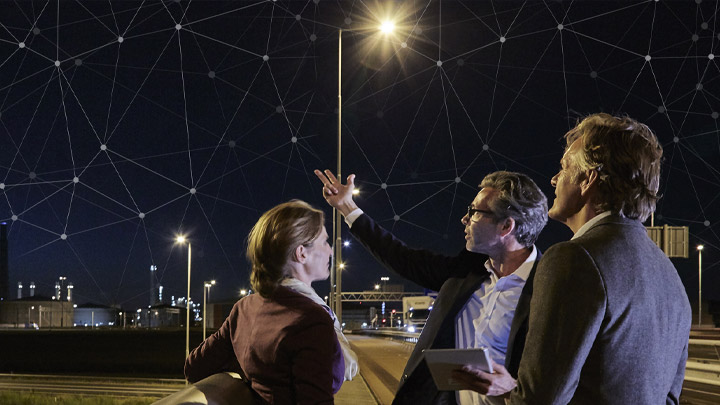Emergency lighting systems for commercial buildings typically do not get the attention they deserve. Most people probably pass them every day without considering their importance. Losing regular power due to an unforeseeable event is a completely different matter. Remember the power outage during the 2013 Super Bowl XLVII? This power loss is one of the worst-case scenarios that none of the building owners or property managers ever want to experience.
While the Superdome blackout was a rare and dramatic event, blackouts happen on a far more frequent basis due to a wide variety of reasons (e.g. weather, human error, accident). Some of these situations could present legal and financial liabilities if the emergency lighting systems are not working properly. Making sure that emergency lighting systems are in proper working order is critical and mandated. As part of their comprehensive fire safety inspection, building maintenance personnel, electric inspectors, and fire marshals perform regular checks of the emergency lighting system.
Current Mode of Operation
The functional testing of modern emergency lighting units can be accomplished by using either an integral test switch or a factory-installed integral electronic device that automatically initiates self-test. The latter method is supported by the leading brand, Bodine, which offers self-testing products. Life Safety Code NFPA 101 7.9.3. requires emergency lighting to be tested for 30 seconds every 30 days and for 90 minutes once a year. In addition, these Bodine products continuously monitor charging current and battery voltage.
Despite the user-friendly self-testing feature, to visually detect the emergency lighting system in a large commercial building can still be time-consuming and be prone to human error. In this situation internet of things (IoT) technology can be applied to help simplify the maintenance and/or inspection process of the modern emergency lighting systems.
Future Mode of Operation
The first and most obvious application of IoT technology is, of course, adding network connectivity to the emergency lighting system. Whether via wire-connection or wireless technology, the result is a connected emergency lighting system that enables remote monitoring and self-test. To the end-users the main benefit is that they can remotely verify that the emergency lighting system is operating properly. Interestingly, this concept first appeared 20 years ago. At that time, due to cost and technology complexity, the market was not ready. Today, the growing acceptance of smart building and fully integrated building management systems has brought the connected emergency lighting concept back to the spotlight.
Down the road, there are exciting future-use cases that could greatly expand the definition and benefits of smart lighting systems. What if the emergency lighting system can leverage external temperature sensors to help the first responder identify the general proximity of the fire? How about integrating occupancy sensors to help first responders pinpoint the location of people trapped in a building? With these potential life-saving benefits, would the insurance industry consider lowering the insurance premium like they do today for residential customers who have qualified home monitoring systems?
Conclusions
As far-fetched as these ideas may sound, all the underlying technologies—smart sensors, digital LED drivers, central control system, smartphone apps, and advanced analytics—are already available. The main challenge is to integrate them into a cost-effective and easy-to-use commercial solution. Furthermore, the quantitative and qualitative benefits must be compelling and easy to recognize for large-scale commercial success.
The lighting industry is undergoing an exciting IoT transformation period. By adding network connectivity, new sensors, digital drivers, and a centralized control system, the emergency lighting systems as we know today could provide greater benefits than simply lighting the dark when power is lost.

North American Product Marketeer – Connected Lighting
Signify

Sensor-Ready (SR) driving the (r)evolution of DALI into the IoT
Learn how DALI evolved into the new SR interface to provide a wireless-enabled infrastructure for the IoT.

Getting streetwise about outdoor lighting
Street lights come in a range of form factors from but despite all their differences, they have one thing in common: they can all be controlled wirelessly.

Human-centric lighting: are you ready to ride the wave?
The SR standard now includes a standardized protocol for tunable white light, allowing it to be controlled wirelessly.